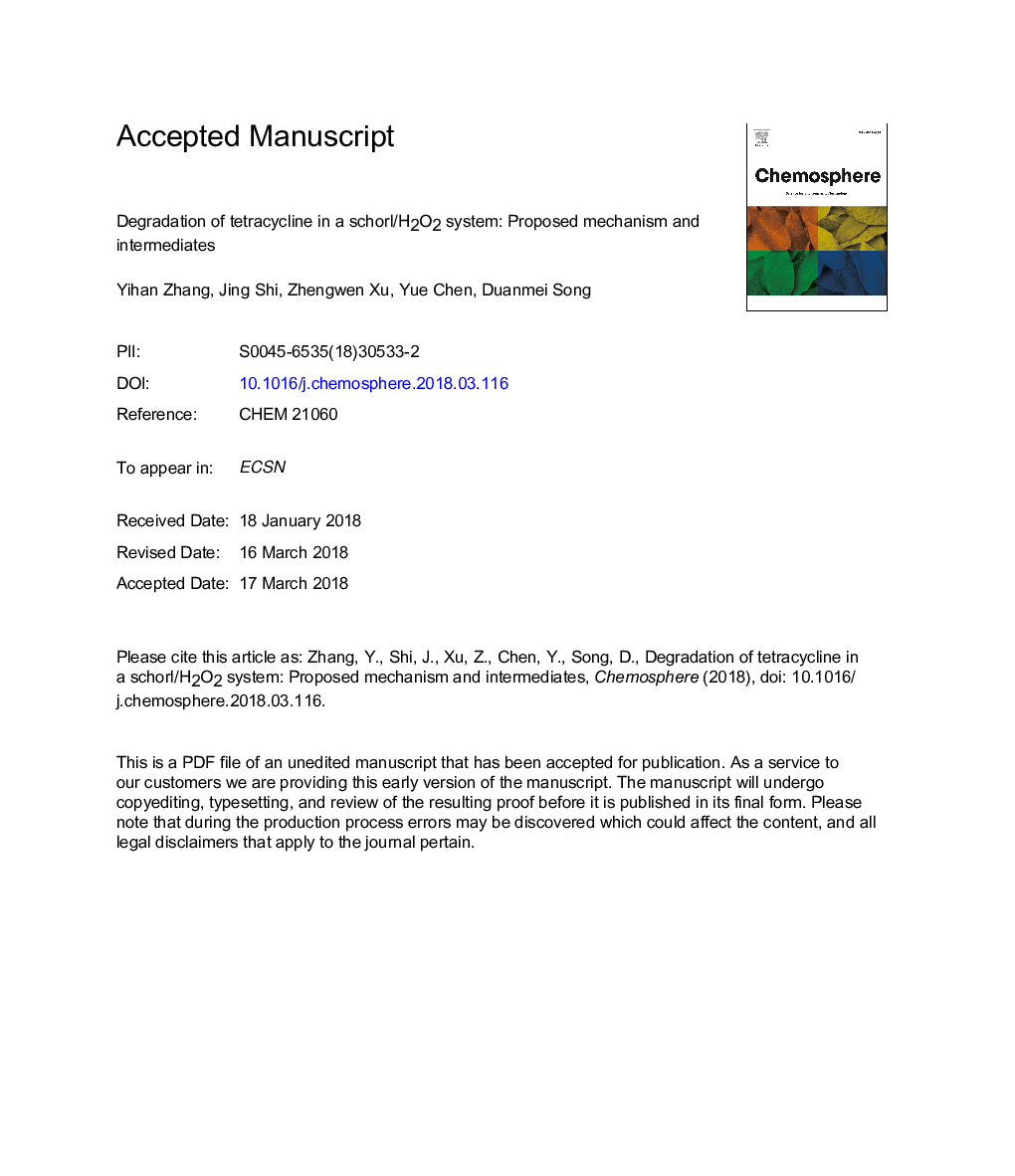| Article ID | Journal | Published Year | Pages | File Type |
|---|---|---|---|---|
| 8851582 | Chemosphere | 2018 | 42 Pages |
Abstract
Schorl could perform as an extremely promising catalyst for decomposing tetracycline hydrochloride (TC) due to its high degradation efficiency, low cost, chemical stability, easy recovery and repeatable utilization. Comparisons of TC degradation indifferent systems showed that schorl/H2O2 system exhibited the optimum pollutant elimination and TOC removal efficiencies. Kinetics and possible mechanisms of TC degradation were clarified. The OH generated on the schorl surface and O2â/HO2 were the main reactive species responsible for TC oxidation. Six possible intermediates were identified, and possible transform mechanisms and pathways were explored. Active radicals were inclined to attack the CC double bond, dimethylamino and phenolic moieties of TC molecular. The principal intermediate products were generated through N-demethylation, oxidation and rearrangement.
Related Topics
Life Sciences
Environmental Science
Environmental Chemistry
Authors
Yihan Zhang, Jing Shi, Zhengwen Xu, Yue Chen, Duanmei Song,
